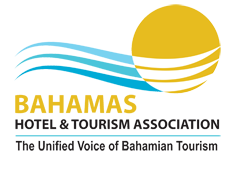Majority of Bahamas Hotels To See Loss In Audits
With the BHA’s 2010 review and tourism outlook survey, a copy of which has been obtained by Tribune Business, indicated some modest optimism and confidence was returning to the Bahamas’ main private sector industry and employer, the results also showed that out of the 30 properties polled, some 60 per cent – 18 – rated “the strength of the tourism aspect of the economy in the Bahamas today” as ‘weak’.
Just 7 per cent of the Nassau/Paradise Island, Grand Bahama and Family Island properties polled rated the Bahamian tourism industry as ‘strong’, while 23 per cent and 10 per cent described its strength as ‘moderate’ and ‘extremely weak’ respectively.
With 63 per cent of those hotels, representing 10,000 employees and almost 50 per cent of the Bahamian hotel room inventory, making a net loss for 2010 (37 per cent were in the black), the short-term outlook for the sector remains challenging, despite tentative recovery signs.
On the positive side, some 60 per cent of Bahamian resorts polled had a ‘fair’ outlook for tourism in 2011, with 3 per cent (just one hotel) forecasting a ‘positive’ year. Yet, with 30 per cent and 3 per cent sharing a ‘negative’ and ‘extremely negative’ forecast, one-third of the industry (10 hotels polled) continues to remain gloomy.
Forecasting key indicators for 2011, only 7 per cent of hotels surveyed by the BHA predicted that employment numbers, sales/revenues and pricing would be “down significantly” compared to 2010. The “significantly down” percentage increased for profits (17 per cent), plus capital spending and room occupancy (both 13 per cent).
In the “down some” category, some 30 per cent of hotels predicted this would happen to their employment and revenue levels during 2011, with 13 per cent adding this would also happen to profits, capital spending and room occupancy.
On a more encouraging note, between 60-70 per cent of Bahamian resorts forecast that these six key indicators would either be flat with 2010 levels or “up some”.
Only 3 per cent (one hotel) predicted that revenues, capital spending and room occupancy would be “up significantly” in 2011 compared to 2010.
Apart from the recession, the Bahamian hotel industry also blamed high airfares and high operating costs for their current performance, together with the Bahamas being a “high cost destination”.
Comparing 2010 with 2009, 33 per cent of Bahamian hotels surveyed said revenues and profits were “down significantly” compared to 2009. Another 37 per cent fell into this category on capital spending, with 27 per cent and 20 per cent seeing “significantly down” room occupancy and pricing. With most staffing cuts in the sector taking place at end-2008, employment was only “significantly down” for 10 per cent of properties in 2010.
Again, the Bahamian hotel industry fell either into the “down some” or “same” “up some” categories when comparing 2010 to 2009. Between 40-57 per cent fell into the latter two categories combined for all six key financial performance indicators, while between 33 per cent to 17 per cent were in the “down some” category. Very few were “up significantly” in 2010.
All this confirms a Bahamian hotel industry that is far from being ‘out of the woods’, and it is far from adding new jobs to replace the employees shed in late 2008 and early 2009. Asked to state the three most important factors impacting their business today in priority order, the obvious number one was the worldwide recession and sluggish US economy.
Close behind, though, were airlift issues – “availability, reliability, high cost” – and the high cost of doing business in the Bahamas, “especially cost and reliability of electricity, telecommunications, group insurance and National Insurance Board (NIB) increases”.
Asked to set out the “most important issues” for the BHA, Promotion Boards and Ministry of Tourism to work on, the hotels said these were airlift, marketing to generate “increased better promotion of the islands”, and reduced utility, licensing, tax and duty costs.
With 84 per cent of those polled participating in the Ministry of Tourism’s Companion Fly Free initiative, some 32 per cent described it as “very effective” and 32 per cent as “effective”, with just 8 per cent saying it made no impact and 28 per cent saying it was “minimally effective”.
Some 80 per cent of Bahamian hotels said they would participate in a similar initiative, with only 10 per cent saying they would not – either because they were not “wholesaler driven” or because it was ineffective or not cost-effective.
The remaining 10 per cent added that they would participate with conditions, namely ensuring island-specific benefits, a “better understanding of how to increase value to our hotel”, and without the 2 per cent tax increase.
And, to prepare for Baha Mar’s new room inventory in 2014, the hotels urged enhanced marketing and training initiatives, plus improved product development that focused on downtown Nassau’s rehabilitation, better taxi standards, safety and security, traffic control and airport development.
The Tribune
February 17, 2011


